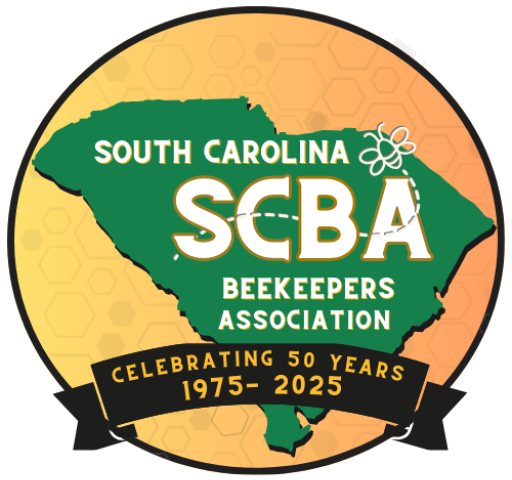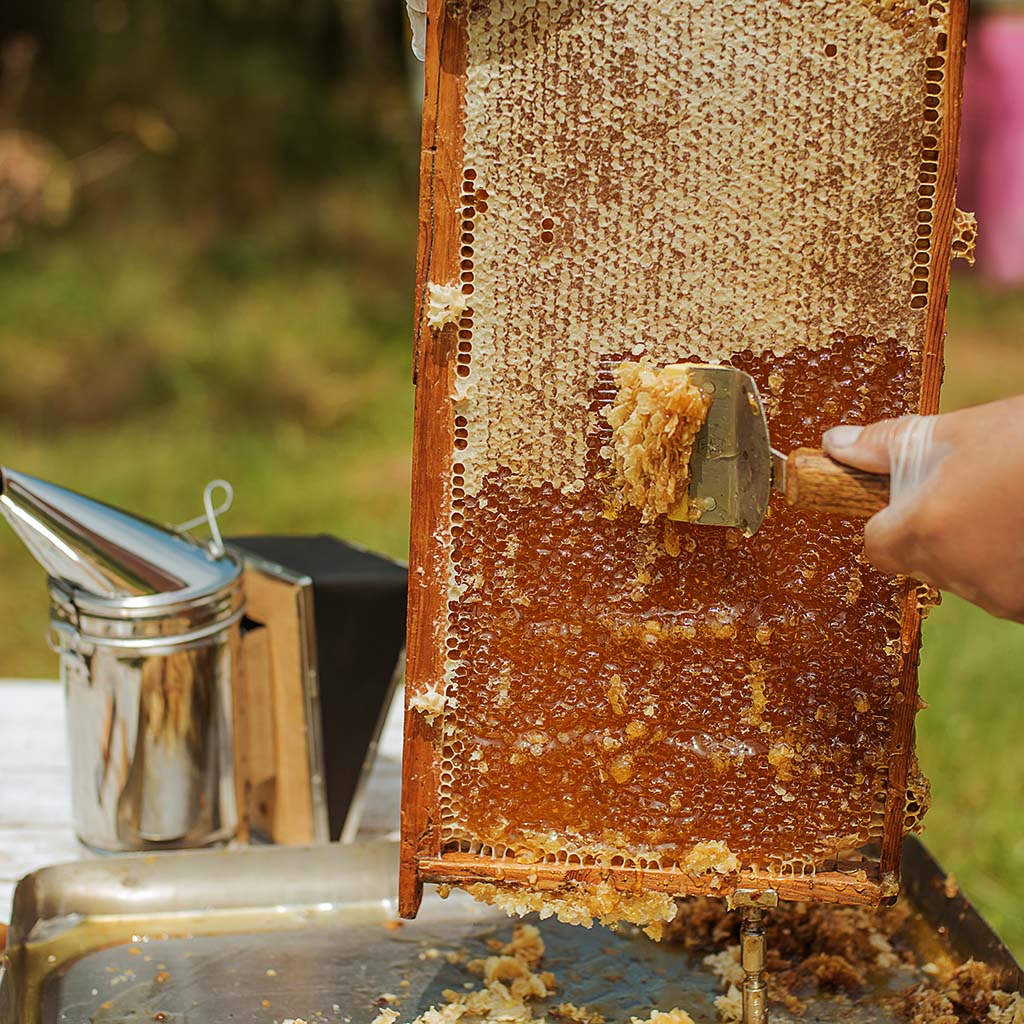By: Larry Coble
SC Journeyman Beekeeper
Originally Published on Sassafrass Bee Farm Blog
Last month, upon returning from the Eastern Apicultural conference in Newark, Delaware, a friend of mine asked me what was the single most meaningful thing I learned. I sat there and a hundred things ran through my mind. I finally said, “Every day offered me new information and different ways to look at what I’m doing in the bee yard.” Now that I’ve had a couple weeks to process some of the material (I took about 75 pages of notes), I have two things that I’ll share here that I think are important for this time of year and going forward.
The first is the ever present focus on mites. Almost every lecture I attended, no matter what the title, mentioned the need to deal effectively with Varroa mites. It seemed like some of the speakers were somewhat apologetic regarding the historically cautious use of some methods used to kill mites. One speaker said the commercial beekeepers got it right by treating at select intervals between pollination contracts and honey flows to deliver 2 or 3 treatments a year to control Varroa levels. Hobbyists, instead, were told to monitor mites and treat accordingly. Add to that the sometimes cumbersome mite assessment methods and too many people simply did not treat at all leading to lost colonies and mite bombs for their other hives and their neighbor’s hives.
Another comment I heard more than once concerned mite assessment. Whereas in the past we assessed to determine the need to treat, now the focus is on assessment to determine if our treatments are effective. It’s now official, “You have mites.” The only thing in question is how many. Given that thresholds for treatment have been reduced over the past years, plus with unexpected mite bombs, it’s now prudent to periodically treat your bees for mites. The reason for doing mite counts now is to determine pre-treatment and post-treatment mite levels. And, you might ask, which is now considered the most important? The later, post-treatment mite level because if the treatment was not effective in lowering your mite level to an acceptable level then another treatment is in order. Without this post-treatment mite level you’re simply left scratching your head if your colony dies over winter. And if you’re pressed for time, as we sometimes are, and don’t have time for a pre-treatment mite count, treatment, and post-treatment count? Well, it’s not ideal and you won’t gather as much information, but the pre-treatment mite count is the first to omit if you must.
So, what did I hear mentioned regarding treatments? I was somewhat surprised at the number of speakers that said they were treating with Apivar (Amitraz), a hard chemical. Why were they using a hard chemical? The outstanding efficacy of 97 – 99% knockdown of mites along with no residual in wax seemed to be its primary selling points. It is a 42 day treatment and honey for human consumption should be removed. Additionally, speakers talked of rotating their use of treatments and not using the same treatment repeatedly. Oxalic acid is still a favorite and perhaps the cheapest if applied by drizzle during the broodless period. Randy Oliver and the University of Georgia are running trials on oxalic acid shop towels and if the results are favorable it is hoped EPA approval will follow. Other treatments are also considered and used based on the time of year, if honey supers are on or off, and dependent on temperature. Commercial operators also factor in the hive movements between crops, before or after spring splits, and other factors. It seems mite treatments are now a given and the only thing to consider is the time you can get one (or more) done between seasons, honey, broodlessness, the fall spike in mite populations, and pollination contracts. It’s a dance but a serious dance for those who make their living from bees and need to keep them alive and healthy.
The other thing I learned (remember I said I’d mention just two) is honey bee nutrition and its importance. When we think of feeding the bees we often think in terms of syrup and various concentrations of syrup. But pollen is where it’s at nutritionally. Poor quality pollen makes weak bees. Nutritious pollen from diverse sources makes lots of bees, healthy bees, and strong bees able to handle the many stressors bees face nowadays. Many years ago I sat in a nutrition class in college and my professor said in no uncertain terms that protein was the currency standard for nutrition. It seems that applies as well to bees. Bees’ immune systems are compromised with poor nutrition. At the same time we see now, more than ever, they are faced with having to detox from man made and environmental chemicals. Only good nutrition provides them with the tools needed to keep themselves healthy, make strong future generations, and combat environmental stressors. Of course, for the beekeeper, finding land with optimum forage is difficult but we must also do what we can to not overtax areas with too many hives while we seek out better environments for our bees or improve their current settings. While nutritional supplements were mentioned the jury is still out on some of these supplements. It seems good pollen is always a good choice. One solution is pollen harvesting during times of plentiful pollen. In response to the beekeeper trapping some pollen the bees will “assign” more pollen collectors to make up for the beekeeper’s trapping. The beekeeper can store the collected pollen for later use during those times when pollen is either of poor quality or during pollen dearth. I’ll be placing pollen traps on some of my hives this coming year. It should be interesting and if I have extra it will be yet another product of the hive for me to sell at market.
I really could go on for hours here. At EAS there are multiple workshops, lectures, and educational offerings going on simultaneously over the course of 5 full days and evenings. Often I would arrive at 7:00AM for breakfast and not return to my dorm room until 8:00 or 9:00PM at night. It’s exhausting and exciting. I do recommend you attend one and here’s my surprise for those that have endured my article: EAS will be in South Carolina in 2019! The location in South Carolina is still to be decided. If you really want to experience a honey bee learning experience like never before make plans to be there. You won’t regret it.


 SCBA Summer Conference 2018 – July 19-21, 2018
SCBA Summer Conference 2018 – July 19-21, 2018